INDIAN OCEAN TRAVEL by TOURISMER
INDIAN OCEAN TRAVEL by TOURISMER

Responsible travel Reunion
Placed in the middle of the Indian Ocean, Reunion seduces with its cultural diversity and its exceptional setting, which offer a first-rate environment for lovers of outdoor activities.
Anyone who arrives in Reunion Island is struck by the diversity of the population. There are white people from the island or from the mainland and a mixed population, ethnic diversity is also cultural diversity, the true wealth of the island.
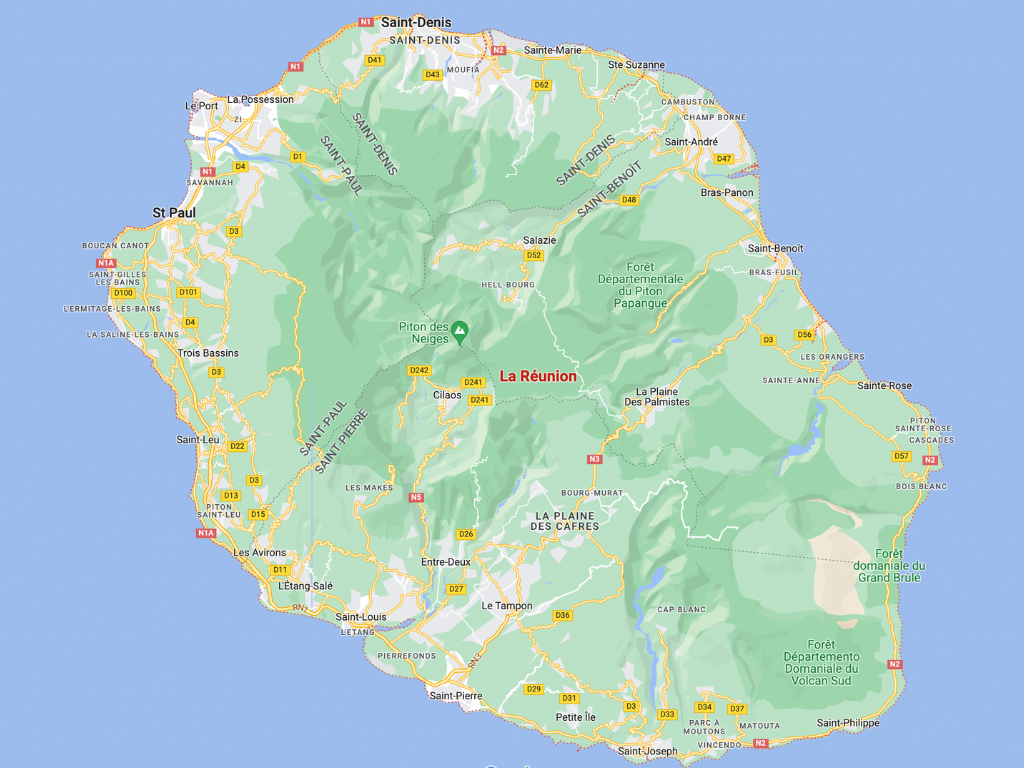
Labels and local networks
With its invaluable wealth, the island has been seeking for several years to set up a virtuous circular economy in which tourist actors, travellers, locals and nature coexist in a harmonious and sustainable way.
In terms of tourism, whether it is accommodation, restaurants, outdoor recreation or cultural activities, several service providers have thus committed themselves to sustainable tourism and the preservation of the natural environments of the region. 'Island. Therefore, adopting a responsible tourism charter has become obvious, especially since 40% of the territory is listed as a World Heritage Site by Unesco. Protecting nature has become a real priority.
We are supporting

Austronesian explorers who traveled the Indian Ocean from Indonesia to Madagascar may have spotted Reunion Island. Later, at the Xe century AD. J.-C., Arab navigators discover the island of Reunion and name it "Dîna morgabin".
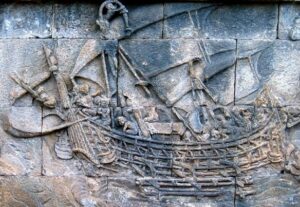
The island then appears on Portuguese maps as Santa Apolonia. Around 1520, Reunion, Mauritius and Rodrigues are called Mascarene Archipelago, from the name of Mascarenhas. At the beginning of the XVIIe , from the name of Mascarenhas. At the beginning of the XVII
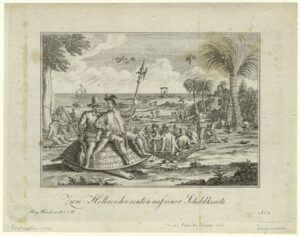
The French then landed there to take possession of it in the name of the king in 1642 and named it Bourbon Island, named after the royal family. From 1715, the island experienced a major economic boom with the development of the cultivation and export of coffee. This culture was at the origin of the considerable development of slavery in the colony.

The abolition of slavery voted by the National Convention on February 4, 1794 comes up against the refusal of its application by Reunion, as by Isle de France (Mauritius). After the climatic disasters of 1806-1807 (cyclones, floods), the cultivation of coffee declined rapidly and was replaced by the cultivation of sugar cane. On December 20, 1848, the abolition of slavery was finally proclaimed by Sarda Garriga.
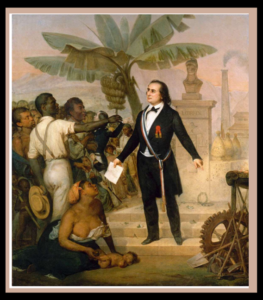
The second half of the 19the century saw the Reunionese population evolve, with the massive arrival of Indian workers, some of whom settled permanently on the island. Many Chinese and Indian Muslims also settled and formed two important communities that contributed to ethnic and cultural diversification.
The participation of Reunion in the First World War is reflected in the sending of many Reunionese to fight in the metropolis and on the Greek front.
During the inter-war period, modernization continued: electricity appeared in wealthy households, and provided public lighting in Saint-Denis. The telegraph (1923) and the radio (1926) put the people of Réunion in contact with the world. This progress essentially benefits the households of landowners, industrialists, executives, large traders, and the mass of the population remains poor.
Although Reunion was spared the fighting during the Second World War, the island suffered terribly from the almost total stoppage of its supplies. On November 28, 1942, a landing of the Free French Forces took place on the island: the local administration loyal to the Vichy government was overthrown, the territory passing under the control of Free France.
On March 19, 1946, Réunion became a French overseas department and then, in 1997, one of the seven outermost regions of the European Union. In the 1970s and 80s, Reunion really reached modernity. A university appears and develops, as well as technical education.
The language of administration, education and the written and oral press is French, which is spoken by 95% of Reunionese and is the most widely spoken language across the island, but around 90% of the population Reunionese speaks Reunionese Creole. Reunionese Creole is different from the Creoles of the West Indies, even if it has followed a partly parallel historical development.
The main religions practiced on the island are Christianity (85%), Hinduism (7%), Islam (2%) and Judaism, the Chinese community venerating for its part the warrior hero who became god, Guan Di .
Literature
The island has seen the birth of many poets, including Léon Dierx, Leconte de Lisle, Auguste Lacaussade, Évariste de Parny and Antoine Bertin. It also inspired Charles Baudelaire who stayed there for a long time.
It was first deployed thanks to tales and Reunionese poetry, flourishing from the middle of the XVIIIe century, before investing in the novel from the middle of the XIXe century and the publication in 1844 of the Marrons by Louis Timagene Houat. In full revival since the departmentalization of Reunion, it is expressed both in French and in Reunionese Creole.
We can mention Michel Houellebecq, writer, poet and essayist born in Saint-Pierre. He is one of the most translated French contemporary authors in the world. He received the Goncourt Prize for “La Carte et le Territoire”.

Painting
The emancipation in Reunion is a painting by the French painter Alphonse Garreau in 1849. This oil on canvas represents Joseph Napoléon Sébastien Sarda Garriga abolishing slavery on the island of Reunion on .

Music and dance
The reunionese music is based on a traditional ensemble with African influences whose two main musical genres are séga and maloya, the first being also present in Mauritius and the Seychelles. Result of interbreeding linked to the existence of slavery in Bourbon, this heritage is gradually revalued.
The sega is danced while spinning on itself. It is a game between the rider and the rider. She decides to go where she wants and the rider tries to predict the direction to get ahead of her and keep a certain proximity.
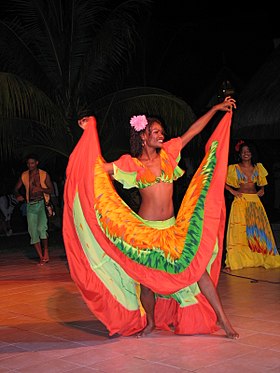
The maloya
Music in homage to the ancestors, the maloya is also the way to make fun of the masters, with some lyrics in French.

The Reunionese scene now includes other genres of music such as reggae, ragga, dancehall, gommance1, zouk, rap, rock, jazz, etc.
Theater
In the 80s and 90s, the Vollard Theater participated in the theatrical revival in Reunion with around thirty creations in a style that is intended to be festive and mixed, as well as urban festivals, concerts, various cultural actions.

Basketry
Vacoa leaves have always been the raw material of the weavers of the Wild South of the island who make baskets, bags, backpacks (the famous bertel), mats, hats, the essential "balls" in vacoa to sell litchis , and many other objects.

source : https://chauviere.sitego.fr/le-vacoa-tresse.html
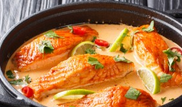 Reflecting the island's mixed heritage, Reunionese cuisine borrows from everyone. Curries, these simmered dishes mix flavors, spices and ingredients. Curry, (which is also written curry), is the basic dish of Reunionese cuisine, it consists of meat or fish prepared with tomatoes, onions, turmeric, pei saffron, and sometimes ginger and many other spices. Rougails, another traditional Creole dish (in Reunion Creole “rougay”) by nature hearty, are made up of meats, vegetables, starches and spices! The fish, prepared in a thousand and one ways, offer journeys full of flavors. Without forgetting the tropical fruits, Victoria pineapple, lychees, passion fruit... There are large markets in Saint-Paul, Saint-Pierre or at the Chaudron in Saint-Denis. Each city has its market and its specialities. All these markets are an excellent introduction to the gastronomy of Reunion Island.
Reflecting the island's mixed heritage, Reunionese cuisine borrows from everyone. Curries, these simmered dishes mix flavors, spices and ingredients. Curry, (which is also written curry), is the basic dish of Reunionese cuisine, it consists of meat or fish prepared with tomatoes, onions, turmeric, pei saffron, and sometimes ginger and many other spices. Rougails, another traditional Creole dish (in Reunion Creole “rougay”) by nature hearty, are made up of meats, vegetables, starches and spices! The fish, prepared in a thousand and one ways, offer journeys full of flavors. Without forgetting the tropical fruits, Victoria pineapple, lychees, passion fruit... There are large markets in Saint-Paul, Saint-Pierre or at the Chaudron in Saint-Denis. Each city has its market and its specialities. All these markets are an excellent introduction to the gastronomy of Reunion Island.
Some emblematic dishes:
The stew of zourites
It is one of the emblematic dishes of Reunionese cuisine. This stew is made with zourites (small octopuses), red wine, spices and herbs. We can say that Reunion civet is a mixture of curry and roast. We find the spices of one and the other, which once simmered in the wine, brings particular flavors.
The sausage rougail
On Reunion Island, sausage rougail is very often cooked and enjoyed. It is very simple to make: this type of dish is prepared in a pot. It can be spicy.

Tangue stew
Tangue is cooked as a curry and is often accompanied by rice and served in banana leaves.
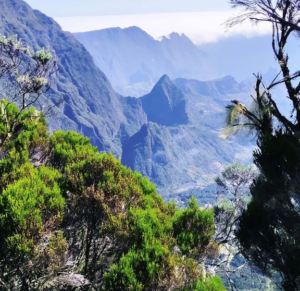 They are like the leaves of a clover in the heart of the island:
They are like the leaves of a clover in the heart of the island:
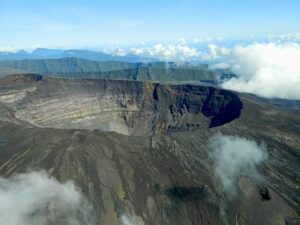 The Piton de la Fournaise is a "red volcano": the eruptions of La Fournaise today are all of the effusive type, it is particularly active, but very closely monitored in particular by the volcanological observatory of Piton de la Fournaise (OVPF-IPGP ). It only very exceptionally threatens populations. He is a "spectacle volcano". The environment to get there passes through real lunar landscapes and sand plains. A visit to the Cité du Volcan is a must to complete this timeless journey: a leading tourist attraction, also an international educational and scientific centre.
The Piton de la Fournaise is a "red volcano": the eruptions of La Fournaise today are all of the effusive type, it is particularly active, but very closely monitored in particular by the volcanological observatory of Piton de la Fournaise (OVPF-IPGP ). It only very exceptionally threatens populations. He is a "spectacle volcano". The environment to get there passes through real lunar landscapes and sand plains. A visit to the Cité du Volcan is a must to complete this timeless journey: a leading tourist attraction, also an international educational and scientific centre.
 Piton Maïdo (means "scorched earth") is the ideal point of view to embrace a complete panorama on the west coast of the island, lined with beautiful beaches, and the circus of Mafate. The opportunity to take in this volcanic circus at a glance, accessible only on foot. This promontory is accessible by car, by a beautiful winding road crossing a forest of cryptomerias: this conifer, of Japanese origin, has been adopted as a species of reforestation because of its adaptation to volcanic soils, mountain climate, cyclonic winds.
Piton Maïdo (means "scorched earth") is the ideal point of view to embrace a complete panorama on the west coast of the island, lined with beautiful beaches, and the circus of Mafate. The opportunity to take in this volcanic circus at a glance, accessible only on foot. This promontory is accessible by car, by a beautiful winding road crossing a forest of cryptomerias: this conifer, of Japanese origin, has been adopted as a species of reforestation because of its adaptation to volcanic soils, mountain climate, cyclonic winds.
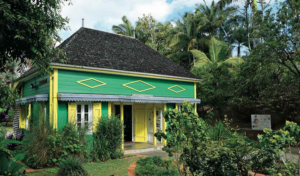 Four hundred years of human occupation, from the cave of the first French in Saint-Paul to the most recent constructions, have left a lasting mark on the landscapes of the island. The Creole hut alone concentrates the imagination and the interest of the heritage built in the tropics. You can admire the Martin-Valliamé house, or the Domaine des Tourelles, in Plaine-des-Palmistes.
Four hundred years of human occupation, from the cave of the first French in Saint-Paul to the most recent constructions, have left a lasting mark on the landscapes of the island. The Creole hut alone concentrates the imagination and the interest of the heritage built in the tropics. You can admire the Martin-Valliamé house, or the Domaine des Tourelles, in Plaine-des-Palmistes.
The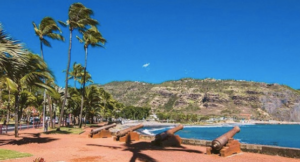 first town on the island has a special charm. If the city center stimulates the senses, the waterfront offers a more peaceful atmosphere: Le Barachois, emblematic place of the Reunion capital, once served as a small port for the goods of the ships. St Denis gathers many historical monuments. To discover them, take part in the guided tour offered by the Intercommunal Tourist Office of the North. You can complete your visit with a stroll through the streets of the city center, and immerse yourself in the atmosphere of a 19th century bourgeois Creole residence.e century, by visiting the Maison Carrère.
first town on the island has a special charm. If the city center stimulates the senses, the waterfront offers a more peaceful atmosphere: Le Barachois, emblematic place of the Reunion capital, once served as a small port for the goods of the ships. St Denis gathers many historical monuments. To discover them, take part in the guided tour offered by the Intercommunal Tourist Office of the North. You can complete your visit with a stroll through the streets of the city center, and immerse yourself in the atmosphere of a 19th century bourgeois Creole residence.e century, by visiting the Maison Carrère.
 The joy of hikers! In the heart of the Reunion mountains, the Cirque de Mafate can only be approached on foot or by helicopter. No road leads to this vast basin bordered by mountain peaks and ramparts, where a few hundred inhabitants live.
The joy of hikers! In the heart of the Reunion mountains, the Cirque de Mafate can only be approached on foot or by helicopter. No road leads to this vast basin bordered by mountain peaks and ramparts, where a few hundred inhabitants live.
Rare are those who regret the effort required to get there, as they are compensated by the tranquility of the place and the beauty of the landscapes.
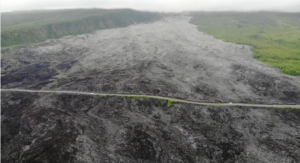 At the Grand Brûlé, the lava flows from each volcanic eruption meet. They have been overlapping for several thousand years, modifying the relief, forcing the road to be moved often, and gaining ground over the sea!
At the Grand Brûlé, the lava flows from each volcanic eruption meet. They have been overlapping for several thousand years, modifying the relief, forcing the road to be moved often, and gaining ground over the sea!
The commune receives many rainfalls favoring the transformation of this volcanic land into lush forests, such as that of Mare Longue, a unique primary tropical forest. This vestige (there remains less than 7% of the original tropical rainforest in Reunion), miraculously survived, is the richest tropical forest in Reunion.
It is this microclimate that benefits Bourbon vanilla, this creeper orchid widely grown here, and which has become one of the emblems of Saint-Philippe along with turmeric. The lava is even in the garden of the houses. At Tremblet, she draws beaches and gives birth to ephemeral waterfalls. Going up to the north, it gives life to a wild coast chiselled by the swell of the Indian Ocean.
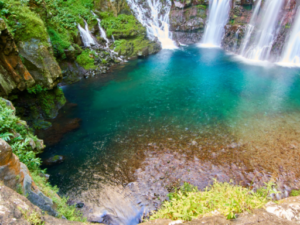 The Niagara waterfall near Sainte-Suzanne, with the evocative name, 25 meters high, superb and grandiose, offers at its base a large basin where swimming is possible. Bassins la Paix and Bassin La Mer are remarkable sites, classified as natural sites, overlooked by large waterfalls nestled in a massif of basalt columns. The Bassin Bleu, located in St Benoit is filled with fresh water. It is a beautiful place, very easily accessible without having to walk a lot, where you can swim.
The Niagara waterfall near Sainte-Suzanne, with the evocative name, 25 meters high, superb and grandiose, offers at its base a large basin where swimming is possible. Bassins la Paix and Bassin La Mer are remarkable sites, classified as natural sites, overlooked by large waterfalls nestled in a massif of basalt columns. The Bassin Bleu, located in St Benoit is filled with fresh water. It is a beautiful place, very easily accessible without having to walk a lot, where you can swim.
Anse des Cascades, popular with locals, is a pleasant place shaded by coconut palms and kiosks available. To conclude, there are more than 300 perennial waterfalls in Reunion! And some are among the highest in the world: with its 640 meters, the White waterfall is ranked third waterfall in France.
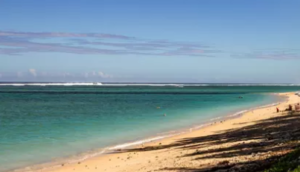
Saint-Gilles-les-Bains is the main seaside resort of the island. There is a botanical garden, the Garden of Eden, as well as the Roches Noires beach, which is a popular spot for surfers.
Set up in 2007, this protected area is the soul of nature in Reunion. It represents 40% of the area of the island and is home to rare fauna and flora, a remarkable biodiversity whose preservation is essential.
SURFACE : 105 447 ha
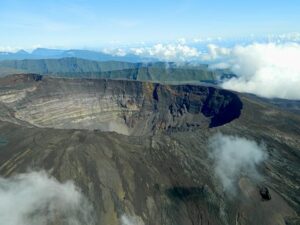
Since 2010, the totality of his heart is registered in the Unesco World Heritage under the name “Pitons, cirques and ramparts”.
Appeared only three million years ago, Reunion Island is home to two volcanic massifs, including one of the most active volcanoes on the planet: the Piton de la Fournaise.
The heart of the National Park offers a mosaic of grandiose natural landscapes, built by successive volcanic eruptions and shaped by collapses and erosion. It is home to more than 110 types of habitats, from the coast to the altimontane (up to 3,070 m altitude), through dry forests, tropical rainforests, pandanaies or tamarinds.
On the fauna side, these are the most visible birds: a hundred species, some of which are endemic and unique in the world (the tuit-tuit, the Virgin bird or “zoizo” the Virgin…). In addition, there are some remarkable species of reptiles and more than 2,000 species of insects.
The Réunion National Park is one of the 34 hotspots of global biodiversity. The heart is also home to inhabited areas (islets of Mafate and Salazes), but also some cattle farms and forestry areas.
The The Reunion Marine Nature Reserve extends over 35 km2 coastline, from Cap La Houssaye to Saint-Paul, at the Roche aux Oiseaux at the Etang Salé.
The Marine Nature Reserve protects 80% of the island's coral reef. More than 3,500 species of animals and plants have been identified there, including 366 different corals, jellyfish or anemones, 530 crustaceans or 1,305 molluscs, starfish, sea urchins and other shells. With this wealth are added nearly 1,000 species of fish and 5 species of sea turtles. An inventory whose biodiversity is recognized as one of the richest in the French overseas territory.
The Etang Saint Paul National Nature Reserve is located on the west coast of the island. Étang Saint-Paul, with a surface area of 415 hectares, is the largest of the coastal wetlands in Reunion.
It is particularly conducive to the development of animal and plant populations.
It is one of the most remarkable sites on the island. The site is free to the public all year round with two possible accesses, one via Savanna and the other via the Tour des Roches.
Land predestined for hiking, Reunion Island offers an exuberant nature.
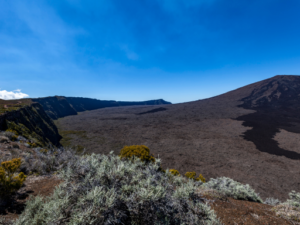 The discovery of its essential natural treasures is done by superb walks: Piton de la FournaiseClimbling Piton des Neiges, natural cirques (Salazie, Cilaos and Mafate, the latter of which is accessible only by foot), waterfalls, Trou de Fer (a real abyss of 300 meters), trek in the tropical forests, lagoons paradise with multiple colorful fish …
The discovery of its essential natural treasures is done by superb walks: Piton de la FournaiseClimbling Piton des Neiges, natural cirques (Salazie, Cilaos and Mafate, the latter of which is accessible only by foot), waterfalls, Trou de Fer (a real abyss of 300 meters), trek in the tropical forests, lagoons paradise with multiple colorful fish …
Those who want an in-depth discovery of the Mascarene archipelago will choose Reunion Island hikes / Mauritius, to combine two dream destinations in the same trip.
To discover Reunion:
Find more updated information on Tourism in Reunion Island in our Blog Tourismer.io

The Reunion branch supports and accompanies the mobility and training of young people from Reunion and Mayotte by setting up international volunteer exchange and solidarity programs in neighboring countries in the Southern Africa and Indian Ocean region.
Find all the information for your commitment course from Reunion and Mayotte.
https://france-volontaires.org/dans-le-monde/la-reunion/